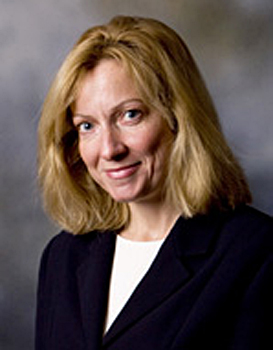Larkin's Research on Root Causes of Homelessness Advances Innovative Intervention Approaches
 |
The School of Social Welfare's Heather Larkin surveyed adults at homeless shelters in Albany and Petaluma, Calif., to fine-tune services to address the lasting effects of childhood abuse and neglect on a person's life. (Photo Mark Schmidt) |
UAlbany's Heather Larkin's research on adverse childhood experiences is being integrated with existing knowledge on resilience and recovery at homeless shelters in both Albany and Petaluma, Calif., to provide more effective services to homeless people.
Larkin, an assistant professor in the School of Social Welfare, surveyed 185 homeless adults at shelters in Albany and at the Committee on the Shelterless (COTS) in Petaluma -- to fine-tune services to address the lasting effects of childhood abuse and neglect on a person's life.
Larkin hopes other researchers and agencies will learn from the COTS approach.
"The goal is for agencies to transform services to help homeless people recover from their childhood traumas -- like the death of a parent, alcoholism of a parent, or physical abuse," said Larkin. "The agencies are then in a position to help them to rebuild a support system so they can leave the shelter, find a job, and a home."
One of those local agencies is the Interfaith Partnership for the Homeless on Sheridan Avenue in Albany. Janine Robitaille, executive director of the Interfaith Partnership, said, "This new research allows us to design relevant intervention approaches for clinical and direct care staff. An understanding of the link between adverse childhood experiences and homelessness will also educate our numerous benefactors who often search for clear reasons individuals struggle with homelessness for extended periods of their lives."
The Adverse Childhood Experiences (ACE) Study, conducted by the federal Centers for Disease Control and Kaiser Permanente, found that 10 categories of abuse, neglect, and household dysfunction are related to one another and implicated in leading causes of dysfunction and death in the U.S.
New research conducted by Larkin shows substantially higher rates of ACEs among homeless people, supporting earlier research connecting adverse childhood experiences with risk for homelessness. In the sample of homeless people studied by Larkin, more than 50 percent had ACE scores of four or higher. That means they suffered at least four major traumas during childhood. Only 7 percent of the Kaiser members studied had ACE scores of four or higher.
Mike Johnson, associate executive director of COTS, said the partnership between Larkin and COTS led to the California agency designing and implementing a comprehensive array of programs addressing ACEs as core injuries, and the agency has had success in breaking the cycle of homelessness.They presented the results of their two-year collaboration on June 4 at the National Healthcare for the Homeless Conference and Policy Symposium in San Francisco, Calif.
"By incorporating research on ACE, resilience, and recovery into our model, we are finding a way for a minimally funded homeless services agency like COTS to help people with deep-seated problems that are associated with adverse childhood experiences and that can lead to homelessness," said Johnson. "This research has helped us create programs that address the impact of those experiences and rebuild a person's support systems to help them return to society.
"The bottom line to our approach, based on our experience and grounded in research, is to offer clients a personal connection with someone who believes in them, to give clients a sense that others have high expectations of them, and that clients have opportunities to make choices to improve their lives," he said.
![]() For more news, subscribe to UAlbany's RSS headline feeds
For more news, subscribe to UAlbany's RSS headline feeds


